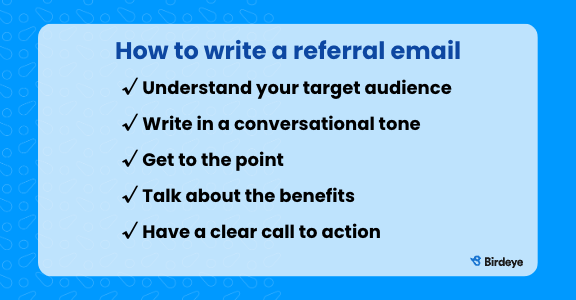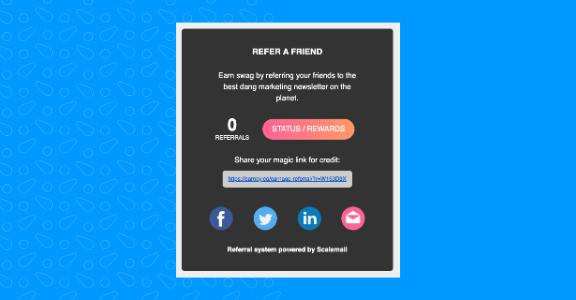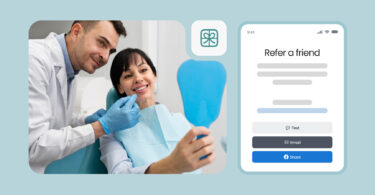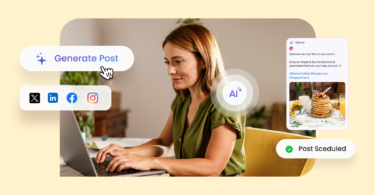Did you know that 92% of people trust recommendations from friends and family more than any other type of advertising? It goes to show that one of the best ways for a business to grow is through a referral marketing program. So if you’re starting a referral program, you need to optimize those referral emails so they can help your business grow. In this article, we’ll help you to understand the impact of these types of emails and how to craft them effectively.

Table of contents
Why referral emails are important
These emails offer various benefits to your business, including:
- Builds customer loyalty: Appreciating customers is crucial if you want to build loyalty. When customers pass their positive experience to others and you give them something in return, they feel valued, appreciated, heard, and, in some cases, feel like they are part of the organization.
- Builds trust: It stands to reason that word of mouth in the form of referral emails is more likely to inspire trust than traditional ads. If your aunt, brother, friend, or colleague says they had a great experience with a company, you’d believe them, wouldn’t you? And if you haven’t heard of the company before, they’ve managed to boost its brand awareness too.
- Tracking and automation: Automating emails is easier and quicker as you don’t have to craft them from scratch every time. You can also keep track of them to know which areas to make changes and improve your referral outreach.
- Personalized incentives: Referral emails are a great way to generate leads. That’s because they offer personalized incentives tailored to recipients or potential customers. These types of referral rewards are more likely to address the recipient’s needs and encourage them to take action than generic sales emails would. This enables more sales, builds customer loyalty, and retains valuable clients.
Birdeye Referrals help businesses craft, send, and track referral campaigns from a single, easy-to-use dashboard. You can also automate your referral outreach so you can focus more on running your business.
How to write a referral email

Now that you know how a referral email can benefit your company, you may be wondering how to write one that engages your audience. Thankfully, there are various ways to develop an attention-grabbing email that feels personalized to your target recipients. Here are some referral email examples to keep in mind:
- Understand your target audience: Who is your referral email addressing? What products are they interested in, and can they refer other people in their circle? It’s time to do your homework — start gathering information about who your audience is through interviews, surveys, and analytical tools. This will help you write a referral email that really speaks to them.
- Write in a conversational tone: You should write a referral email in a friendly manner. You can do this by using simple words, addressing the recipient directly by using “you” and “us,” and showing emotion.
- Get to the point: Remember that simplicity is key. While it’s great to be creative, your emails need to be precise and convey the right message.
- Talk about the benefits: Your audience needs to know what benefits your referral program offers. So make sure you spell it out loud and clear — and be specific too. For example, let them know that if they take up your offer in the next 30 days, they’ll get an exclusive, one-off discount.
Have a clear call to action: Once your audience reads the email, they need to know what next steps they should take, that is, how to join the referral program. Give them a link they can click on and explain the process.
Attention-grabbing email subject line
The referral email subject line is a crucial aspect of your email. It needs to be captivating enough so that the recipient will be interested in wanting to read the content inside. Here’s how to write a compelling subject line:
- Make it short and sweet: “Get a 50% off discount if you join our referral program now!” With this kind of example, you cut to the chase and ensure you capture the essence of what you are offering.
- Use words that drive action: They should let the reader know the next steps to follow after reading the subject line. For example, “Action required” or “Act now.”
Create urgency: You can do this by offering a time-limited deal. For example, “Refer a friend within the next seven days and get a free gift.”
With these tips in mind, let’s look at some referral email subject line examples to help you get started: • Get a 10% discount on your next purchase 🛍️ • Increase your loyalty points by referring your friend • Enter for a chance to win big 🍾
Types of referral email templates
There are two types of templates:
- Mass referral templates are used to send to several people at the same time. While not entirely personalized, they can still appeal to individual desires and generate leads by offering an exclusive deal or discount if acted on within a specific timeframe.
- Personal referral templates are sent to individual people. They are personalized with the reader’s details, such as “Women in your age group,” and state clear benefits for this demographic.
When to use a referral email program
While an email can help leverage your customer base and expand your market, it may not suit all scenarios. Here are some situations that you can use a referral email program for your marketing:
- When your customer base is active and your customers are willing to refer other people.
- When your business wants to acquire new customers and needs leads.
- When you can reliably track referrals and measure the return on investment of your campaigns.
Types of referral program emails

There are a handful of referral email types. Here are some examples:
- Referral request email: Use this to ask customers to refer their family, friends, and colleagues to your business.
- Referral program email: Use this email to promote your referral program.
- Sales referral email for business: This type is designed to generate leads for your business. Here, you ask your customers to refer your brand to their colleagues and other companies.
- Payment referral email: This one lets your clients know they can be rewarded when they refer others to your products or services.
- Ask for a referral email: Use this type to request previous customers that were pleased with your company to refer it to other customers.
FAQs about a referral email
To write a referral email, identify your target audience, write easily and conversationally, get straight to the point, be clear about the incentive and benefits, and add a clear call to action.
A referral email is written to existing clients requesting them to refer a business to others. Most companies reward participants who do this to incentivize them to take action.
Increase sales with captivating referral emails
Just like good, old-fashioned word of mouth, referrals can be one of your most successful marketing strategies. Now that you understand the principles of these types of emails, you can start including them in your marketing strategy. Remember to do your homework, understand your audience, and you’ll be ready to go. It’s time to start drafting that killer email and see it generate more leads, inspire customer loyalty, and transform your business.

Originally published









